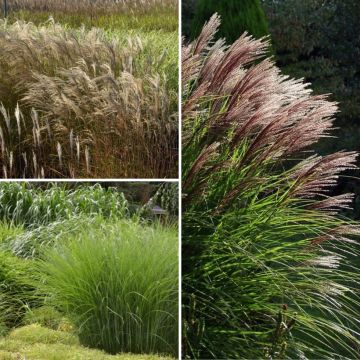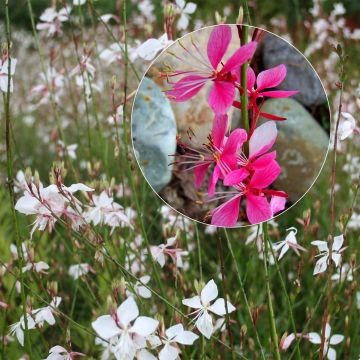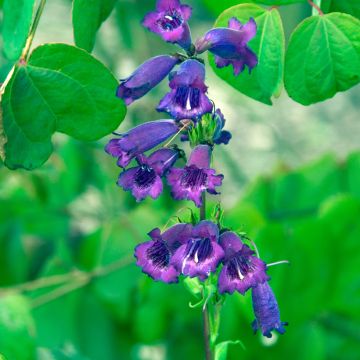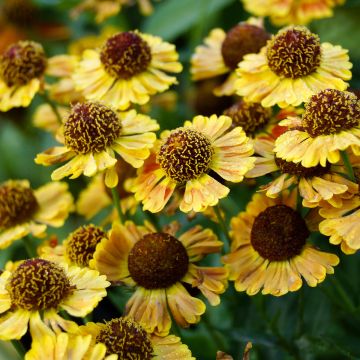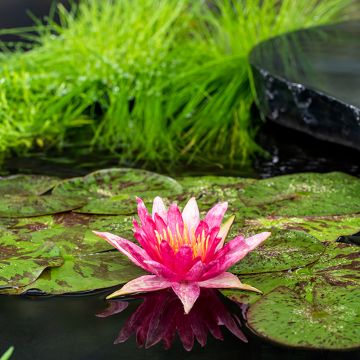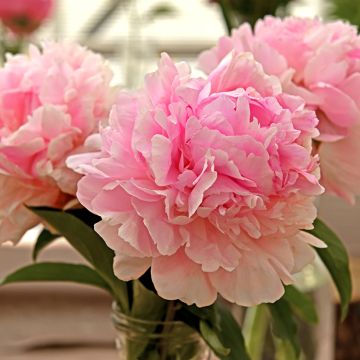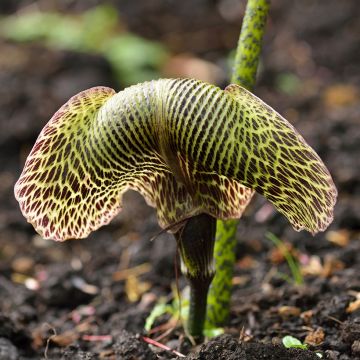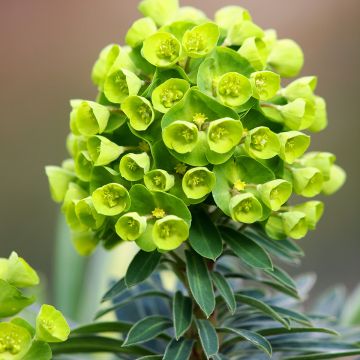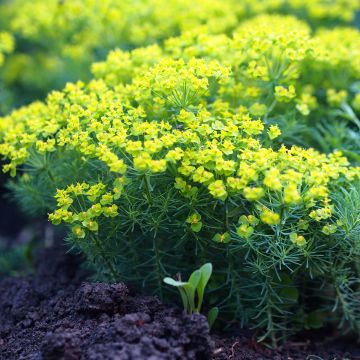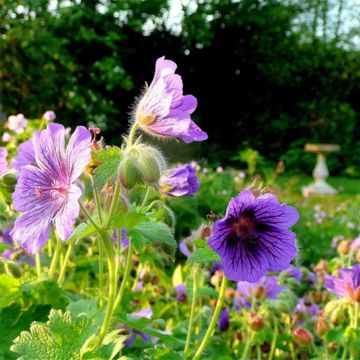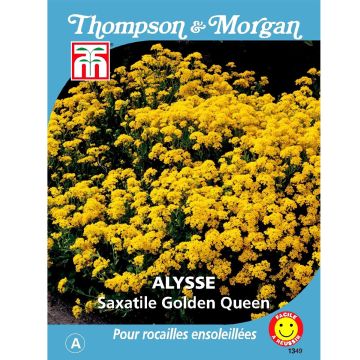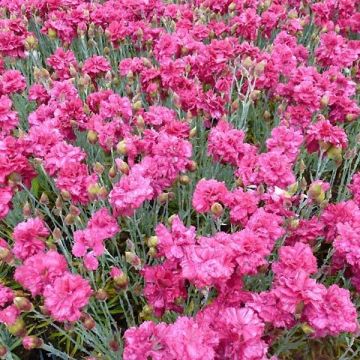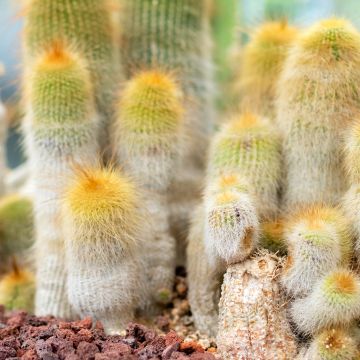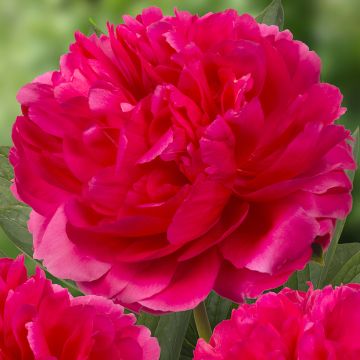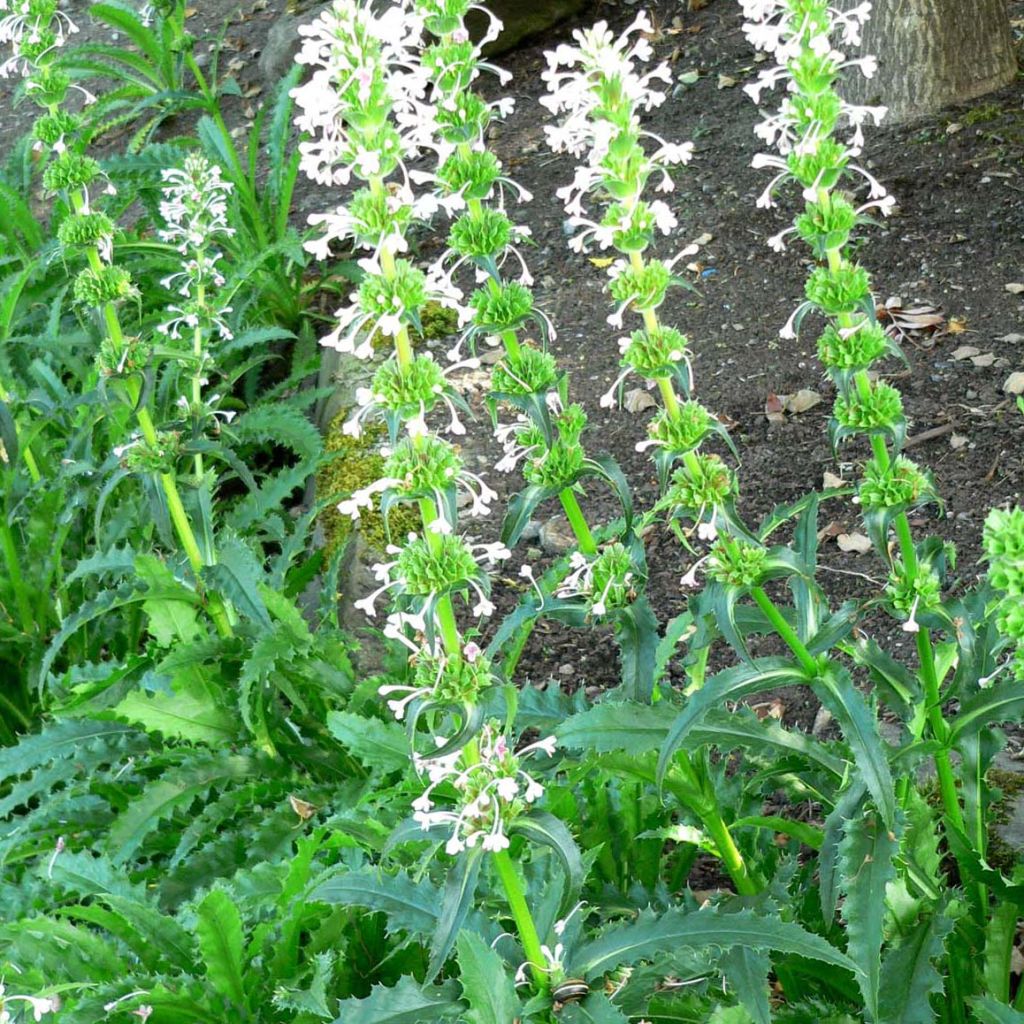

Morina longifolia
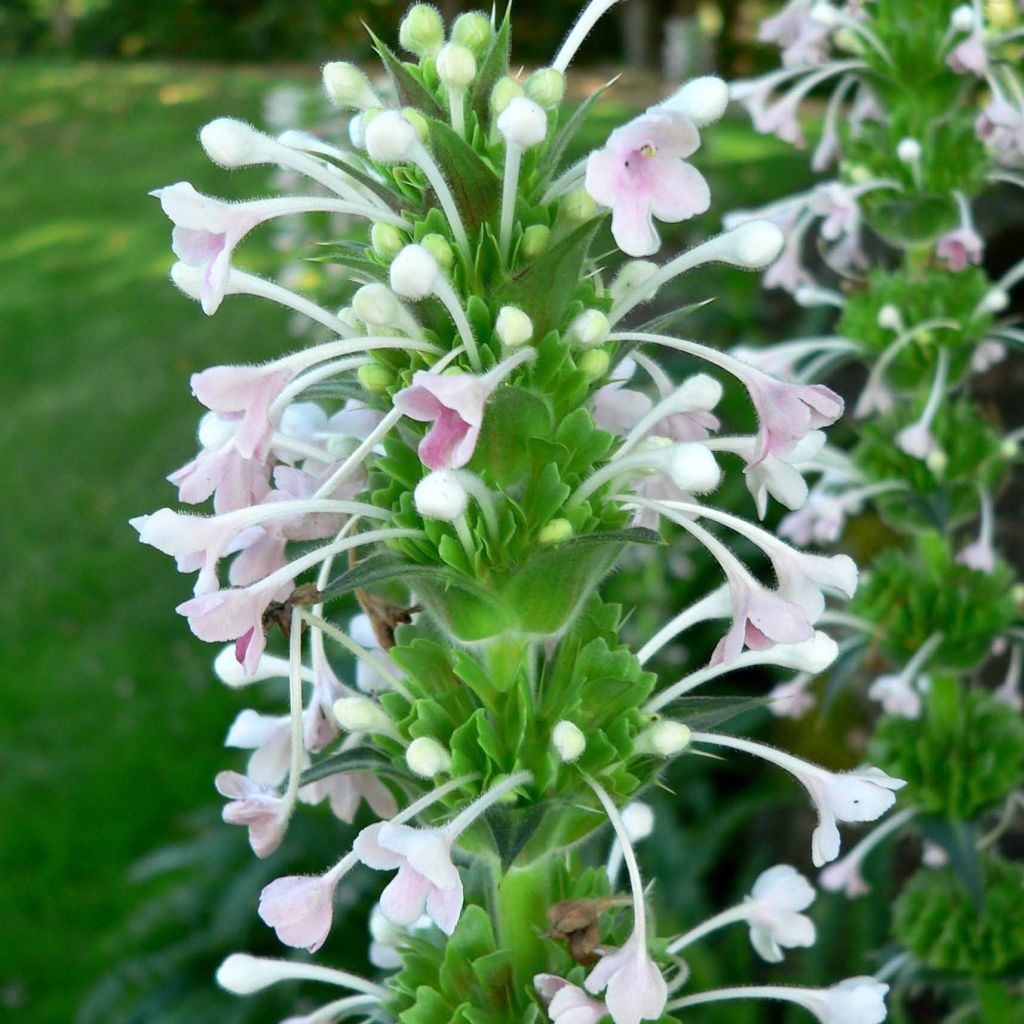

Morina longifolia


Morina longifolia
Morina longifolia
Morina longifolia
Long-leaved Whorlflower
Disappeared in the spring, as I feared. This is not the first time I have received young plants; Flower Promise should monitor the quality of its shipments.
ANNICK , 21/04/2018
Special offer!
Receive a €20 voucher for any order over €90 (excluding delivery costs, credit notes, and plastic-free options)!
1- Add your favorite plants to your cart.
2- Once you have reached €90, confirm your order (you can even choose the delivery date!).
3- As soon as your order is shipped, you will receive an email containing your voucher code, valid for 3 months (90 days).
Your voucher is unique and can only be used once, for any order with a minimum value of €20, excluding delivery costs.
Can be combined with other current offers, non-divisible and non-refundable.
Home or relay delivery (depending on size and destination)
Schedule delivery date,
and select date in basket
This plant carries a 12 months recovery warranty
More information
We guarantee the quality of our plants for a full growing cycle, and will replace at our expense any plant that fails to recover under normal climatic and planting conditions.
Would this plant suit my garden?
Set up your Plantfit profile →
Description
Morina longifolia is an uncommon Himalayan perennial, with an unusual but highly ornamental architecture. At first glance, its rosette of long, toothed, bright green leaves resembles a common thistle. Then in summer the 'weed' transforms into a beauty queen. A stunning flowering stem emerges from the heart of the rosette with flowers that start white, then turn pink and finally cherry red, gathered in small layered crowns, creating a beautiful gradient from white to red. It will thrive in the sun, in deep and well-drained soil which is not too dry in summer.
Morina longifolia is a plant from the dipsacaceae family, a cousin of scabious. It is native to Nepal, from Kashmir to Bhutan, and grows at an altitude between 3000 and 4000m (9842 and 13123ft). It has fleshy roots and develops persistent rosettes of foliage close to the ground like a thistle, composed of long flexible leaves that can measure 30cm (12in) by 4cm (2in) in width, with toothed and spiny edges and release a gentle citrus fragrance when crushed. They are a beautiful bright green. The stems are covered with small leaves and stretch up to 80cm (32in) high during the season with curious whorls of flowers at their tips in July-August. These 3cm (1in) long flowers are a long tube that widens at its end into a corolla. The calyx at the base of the flowers is formed by two unequal lobes. Each whorl is supported by tough bracts ranging from purple to bronze. The flowers change colour once they are pollinated. Starting white at blooming, they gradually turn pink and eventually become almost red. The abundant seeds easily germinate in light soil, producing seedlings that resemble thistles.
Morina longifolia will be showcased in a rustic bed or a cottage garden, but also fits very well in an urban setting. To grow it successfully you must ensure good drainage, never waterlogged in winter. This beautiful plant pairs well with angel's fishing rod (Dierama pulcherrimum). The contrast between their respective silhouettes is tempered by their flowerings in shades of pink, red, and white, and their cultivation requirements are similar: porous, humus-rich soil, rather dry in winter but moist in summer. A lower and bushy companion, such as a well-composed perennial geranium like 'Blue Cloud', or 'Salome' with a beautiful dark eye, will work well. In drier soil, Morina longifolia can be replaced by or associated with Phlomis cashmeriana, which looks a little like it from a distance.
Report an error about the product description
Morina longifolia in pictures
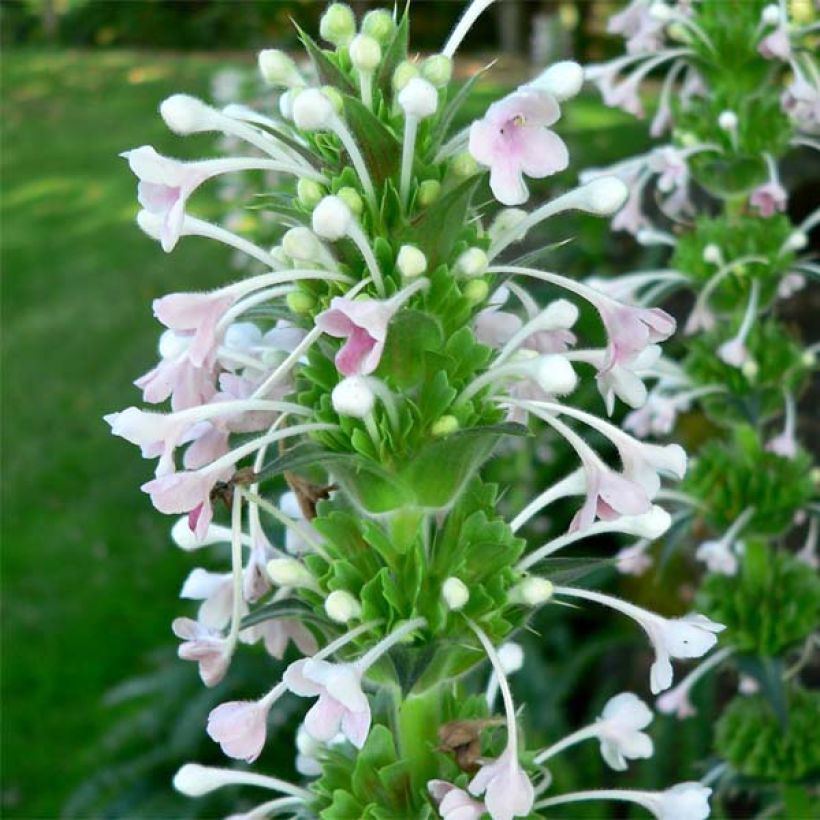



Flowering
Foliage
Plant habit
Botanical data
Morina
longifolia
Dipsacaceae
Long-leaved Whorlflower
Himalayas
Other Perennials A to Z
View all →Planting and care
Morina plants require a very sunny exposure and deep, fertile soil, moist in summer, but very well-drained and quite dry in winter. The soil can be slightly chalky, neutral or slightly acidic. They dislike too much competition from other plants and soils that are too wet, where they can rot in winter. Remove faded flowers if you want to avoid self-seeding. This plant reproduces mainly through its seeds. Root cuttings can be taken, but it is a rather delicate method more suitable for experienced gardeners.
We grow them with dwarf carnations and small campanulate flowers, which they get along quite well with.
Planting period
Intended location
Care
-
, onOrder confirmed
Reply from on Promesse de fleurs
Similar products
Haven't found what you were looking for?
Hardiness is the lowest winter temperature a plant can endure without suffering serious damage or even dying. However, hardiness is affected by location (a sheltered area, such as a patio), protection (winter cover) and soil type (hardiness is improved by well-drained soil).

Photo Sharing Terms & Conditions
In order to encourage gardeners to interact and share their experiences, Promesse de fleurs offers various media enabling content to be uploaded onto its Site - in particular via the ‘Photo sharing’ module.
The User agrees to refrain from:
- Posting any content that is illegal, prejudicial, insulting, racist, inciteful to hatred, revisionist, contrary to public decency, that infringes on privacy or on the privacy rights of third parties, in particular the publicity rights of persons and goods, intellectual property rights, or the right to privacy.
- Submitting content on behalf of a third party;
- Impersonate the identity of a third party and/or publish any personal information about a third party;
In general, the User undertakes to refrain from any unethical behaviour.
All Content (in particular text, comments, files, images, photos, videos, creative works, etc.), which may be subject to property or intellectual property rights, image or other private rights, shall remain the property of the User, subject to the limited rights granted by the terms of the licence granted by Promesse de fleurs as stated below. Users are at liberty to publish or not to publish such Content on the Site, notably via the ‘Photo Sharing’ facility, and accept that this Content shall be made public and freely accessible, notably on the Internet.
Users further acknowledge, undertake to have ,and guarantee that they hold all necessary rights and permissions to publish such material on the Site, in particular with regard to the legislation in force pertaining to any privacy, property, intellectual property, image, or contractual rights, or rights of any other nature. By publishing such Content on the Site, Users acknowledge accepting full liability as publishers of the Content within the meaning of the law, and grant Promesse de fleurs, free of charge, an inclusive, worldwide licence for the said Content for the entire duration of its publication, including all reproduction, representation, up/downloading, displaying, performing, transmission, and storage rights.
Users also grant permission for their name to be linked to the Content and accept that this link may not always be made available.
By engaging in posting material, Users consent to their Content becoming automatically accessible on the Internet, in particular on other sites and/or blogs and/or web pages of the Promesse de fleurs site, including in particular social pages and the Promesse de fleurs catalogue.
Users may secure the removal of entrusted content free of charge by issuing a simple request via our contact form.
The flowering period indicated on our website applies to countries and regions located in USDA zone 8 (France, the United Kingdom, Ireland, the Netherlands, etc.)
It will vary according to where you live:
- In zones 9 to 10 (Italy, Spain, Greece, etc.), flowering will occur about 2 to 4 weeks earlier.
- In zones 6 to 7 (Germany, Poland, Slovenia, and lower mountainous regions), flowering will be delayed by 2 to 3 weeks.
- In zone 5 (Central Europe, Scandinavia), blooming will be delayed by 3 to 5 weeks.
In temperate climates, pruning of spring-flowering shrubs (forsythia, spireas, etc.) should be done just after flowering.
Pruning of summer-flowering shrubs (Indian Lilac, Perovskia, etc.) can be done in winter or spring.
In cold regions as well as with frost-sensitive plants, avoid pruning too early when severe frosts may still occur.
The planting period indicated on our website applies to countries and regions located in USDA zone 8 (France, United Kingdom, Ireland, Netherlands).
It will vary according to where you live:
- In Mediterranean zones (Marseille, Madrid, Milan, etc.), autumn and winter are the best planting periods.
- In continental zones (Strasbourg, Munich, Vienna, etc.), delay planting by 2 to 3 weeks in spring and bring it forward by 2 to 4 weeks in autumn.
- In mountainous regions (the Alps, Pyrenees, Carpathians, etc.), it is best to plant in late spring (May-June) or late summer (August-September).
The harvesting period indicated on our website applies to countries and regions in USDA zone 8 (France, England, Ireland, the Netherlands).
In colder areas (Scandinavia, Poland, Austria...) fruit and vegetable harvests are likely to be delayed by 3-4 weeks.
In warmer areas (Italy, Spain, Greece, etc.), harvesting will probably take place earlier, depending on weather conditions.
The sowing periods indicated on our website apply to countries and regions within USDA Zone 8 (France, UK, Ireland, Netherlands).
In colder areas (Scandinavia, Poland, Austria...), delay any outdoor sowing by 3-4 weeks, or sow under glass.
In warmer climes (Italy, Spain, Greece, etc.), bring outdoor sowing forward by a few weeks.































